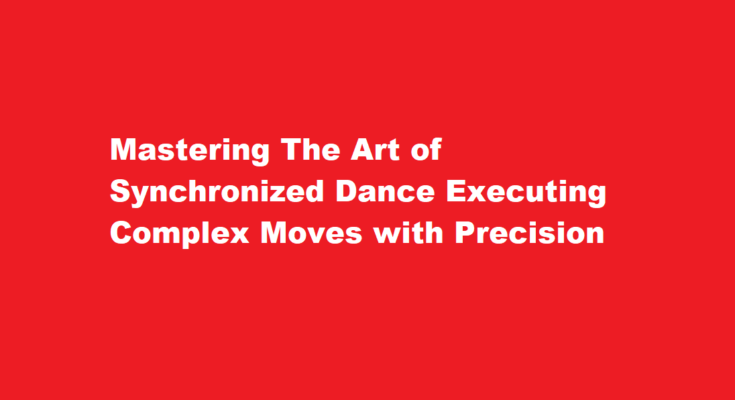Introduction
Synchronized dance routines are a mesmerizing display of human coordination, precision, and artistic expression. Whether you’re a professional dancer or a member of a dance team, executing complex dance moves in perfect harmony can be a daunting task. However, with dedication, practice, and the right approach, mastering intricate choreography is within reach. In this article, we will explore the key steps and techniques to help you execute complex dance moves flawlessly in a synchronized dance routine.
Understanding the Choreography
The foundation of executing complex dance moves in synchronization begins with a deep understanding of the choreography. Start by breaking down the routine into smaller sections, focusing on each move’s details, transitions, and timing. It’s crucial to grasp the choreographer’s vision and the story behind the dance to ensure you convey the intended emotions and themes accurately.
Develop Strong Basics
Before attempting complex dance moves, ensure you have a solid foundation in dance fundamentals. This includes mastering basic techniques such as posture, balance, and body alignment. A strong base will not only enhance your overall performance but also make it easier to transition into more intricate steps. Regularly practicing these basics through warm-up routines and exercises is essential to maintain proficiency.
Timing and Counting
Timing is everything in synchronized dance routines. Familiarize yourself with the music’s beat and rhythm, and practice counting steps or beats to match the music precisely. Timing is particularly crucial when executing complex moves that require synchronization with fellow dancers. Use musical cues to coordinate your actions and ensure everyone in the group is in sync.
Visual and Spatial Awareness
Executing complex dance moves in synchronization also requires an acute sense of visual and spatial awareness. You must be aware of your position relative to other dancers, props, and the stage. Maintain eye contact with your fellow dancers to establish a connection and ensure cohesion within the group. Practice moving within the dance space while maintaining precise formations, ensuring that your movements are fluid and visually appealing.
Isolation and Coordination
Complex dance moves often involve isolating specific body parts while coordinating them with other movements. Isolation drills can help you master this skill. Isolate body parts like arms, legs, or hips and practice moving them independently while keeping the rest of your body stable. Gradually integrate these isolated movements into the choreography to create a seamless flow.
Partner and Group Work
In synchronized dance routines, teamwork is paramount. Collaborate closely with your fellow dancers, and spend time perfecting partner or group moves. Clear communication is vital, so everyone understands their roles and responsibilities within the routine. Trust and unity among team members are essential to executing complex moves together harmoniously.
Repetition and Muscle Memory
Repetition is the key to building muscle memory, which allows you to execute complex dance moves without conscious thought. Practice the routine regularly, focusing on problem areas and challenging sequences. Break down the moves into smaller segments and rehearse them until they become second nature. This process not only ensures precision but also boosts your confidence on stage.
Video Analysis and Feedback
Record your practice sessions and performances to review your progress objectively. Analyze the videos for timing, synchronization, and overall execution. Seek feedback from choreographers, instructors, or trusted peers to identify areas for improvement. Constructive criticism is invaluable in refining your skills and making necessary adjustments.
FREQUENTLY ASKED QUESTIONS
How can I improve my synchronization dance?
The key to synchronization is to be extremely precise about what those counts are. This often means dividing the downbeat into sections (“1e and a, 2e and a”), so that every single moment gets its own count—even the smallest of transitional steps.
What is the style or way of executing the movements of the dancer?
Choreography is the art of making dances, the gathering and organization of movement into order and pattern.
Conclusion
Mastering the art of executing complex dance moves in a synchronized dance routine is a journey that requires dedication, practice, and collaboration. Understanding the choreography, developing strong basics, perfecting timing, and cultivating spatial awareness are foundational steps. Isolation, coordination, and group work are critical skills that allow you to shine in complex routines. Through repetition and video analysis, you can continuously refine your performance and achieve the precision required for synchronized dance. With perseverance and a commitment to the craft, you can captivate audiences with flawless execution and the beauty of synchronized dance.
Read Also : Mastering The Balance Beam Conquering Difficult Gymnastics Routines



